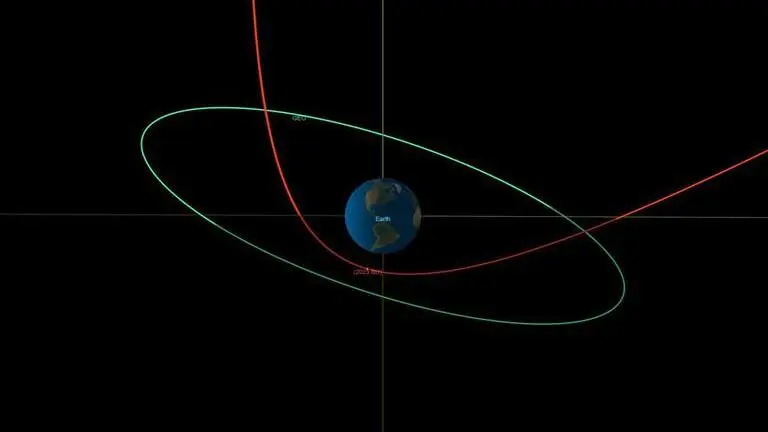Updated 27 January 2023 at 11:57 IST
STUNNING: Asteroid 2023 BU that passed South America was closer than some satellites
With an approach of 3,600km, the space rock known as 2023 BU, whipped over the southern tip of South America on Thursday. Apparently, it was a close shave.
- Science News
- 3 min read

A space rock named '2023 BU' whipped over the southern tip of South America late Thursday night. Although NASA had said that it was harmless, it counted as a close shave with an approach of 3,600km (2,200 miles). The asteroid was the size of a small bus but it illustrated how many undetected asteroids lurked near Earth. There was no risk of the asteroid impacting Earth.
"On Thursday, a small near-Earth asteroid will have a very close encounter with our planet. Designated 2023 BU, the asteroid will zoom over the southern tip of South America at about 4:27 p.m. PST (7:27 p.m. EST) only 2,200 miles (3,600 kilometers) above the planet’s surface and well within the orbit of geosynchronous satellites," NASA said on Wednesday in its announcement.
The asteroid was discovered by astronomer Gennadiy Borisov, discoverer of the interstellar comet 2I/Borisov, from his MARGO observatory in Nauchnyi, Crimea, on Saturday, January 21. Follow-up observations have refined what we know about 2023 BU's size and crucially, its orbit.
Even if 2023 BU had been on a direct collision course, it would have struggled to do much damage. The small asteroid – estimated to be 11.5 to 28 feet (3.5 to 8.5 meters) across – would turn into a fireball and largely disintegrate harmlessly in the atmosphere, with some of the bigger debris potentially falling as small meteorites.
Advertisement
For comparison, the famous Chelyabinsk meteor that entered Earth's atmosphere over southern Russia in 2013 was an object near 20m (66ft) across. It produced a shockwave that shattered windows on the ground, reported BBC.
Scientists at the NASA say 2023 BU's orbit around the Sun has been modified by its encounter with Earth. Our planet's gravity pulled on it and adjusted its path through space.
Advertisement
"Before encountering Earth, the asteroid's orbit around the Sun was roughly circular, approximating Earth's orbit, taking 359 days to complete its orbit about the Sun," the agency said in a statement. "After its encounter, the asteroid's orbit will be more elongated, moving it out to about halfway between Earth's and Mars' orbits at its furthest point from the Sun. The asteroid will then complete one orbit every 425 days."
Mass-extinction rocks all detected
There is a great effort under way to find the much larger asteroids that really could do damage if they were to strike the Earth. A 12km-wide rock that wiped out the dinosaurs, have likely all been detected and are not a cause for worry, reported BBC citing NASA.
Statistics indicate perhaps only about 40% of the 150m-sized asteroids have been seen and assessed to determine the level of threat they might pose. Such objects would inflict devastation on the city scale if they were to impact the ground. Prof Don Pollacco from the University of Warwick, UK, told BBC News, "There are still asteroids that cross the Earth's orbit waiting to be discovered."
"2023 BU is a recently discovered object supposedly the size of a small bus which must have passed by the Earth thousands of times before. This time it passes by only 2,200 miles from the Earth - just 1% of the distance to the moon - a celestial near miss.
"Depending on what 2023 BU is composed of it is unlikely to ever reach the Earth's surface but instead burn up in the atmosphere as a brilliant fireball - brighter than a full moon.
"However, there are likely many asteroids out there that remain undiscovered that could penetrate the atmosphere and hit the surface to cause significant damage - indeed many scientists think we could be due such an event."
Published By : Digital Desk
Published On: 27 January 2023 at 11:57 IST
